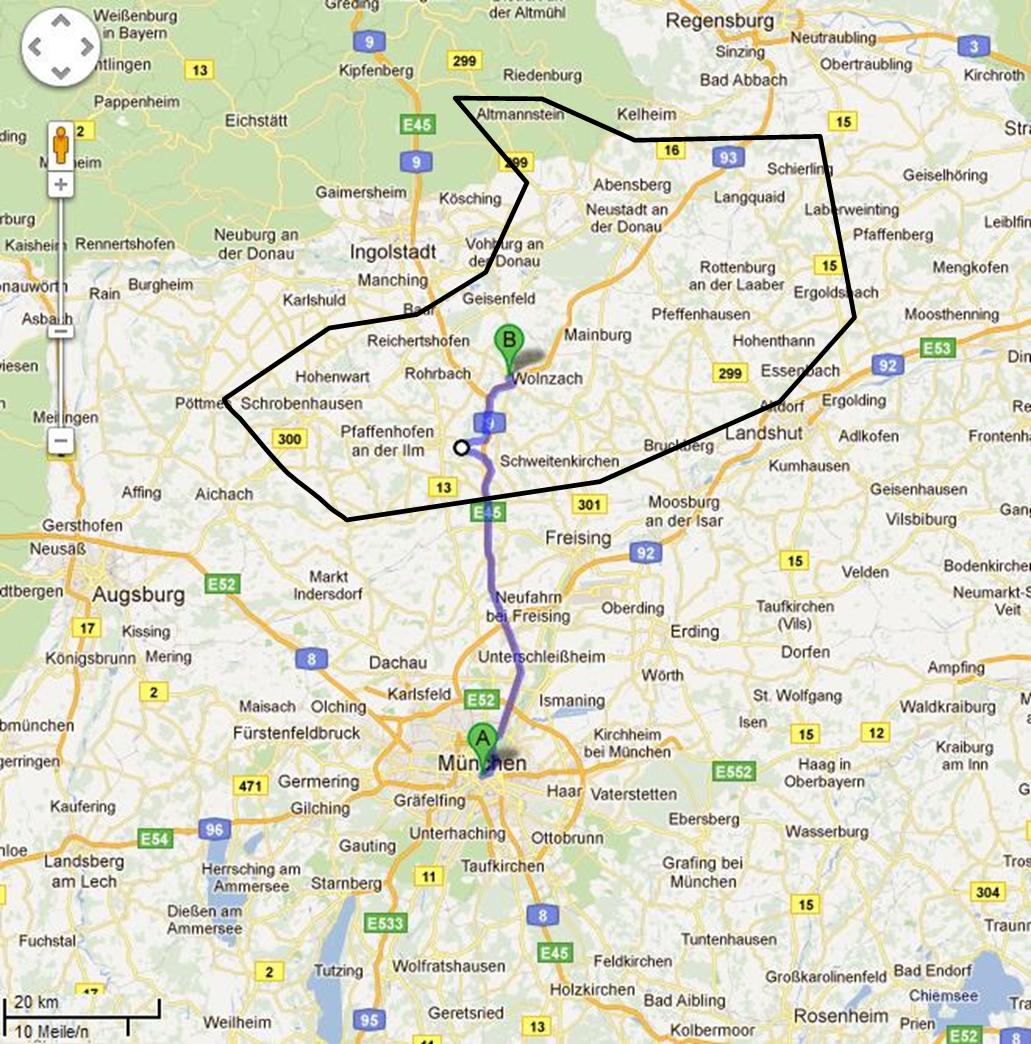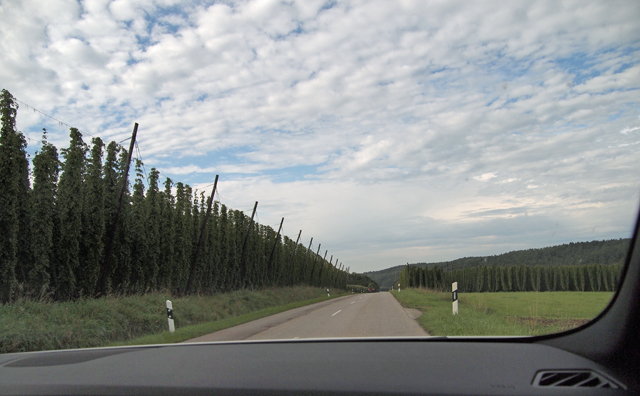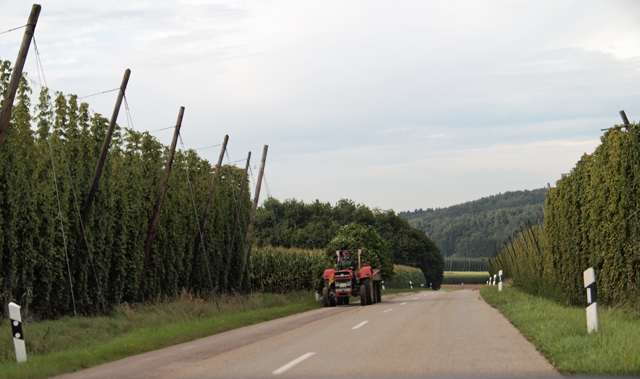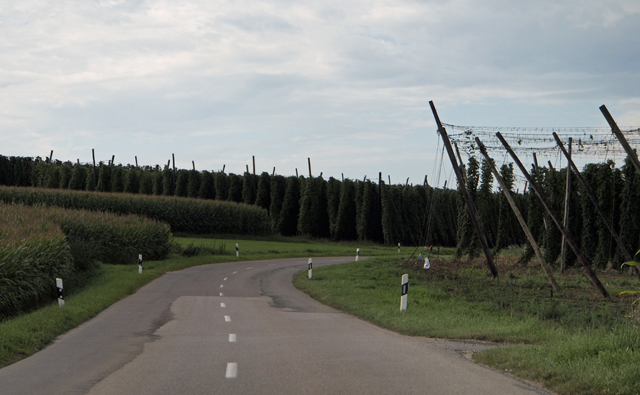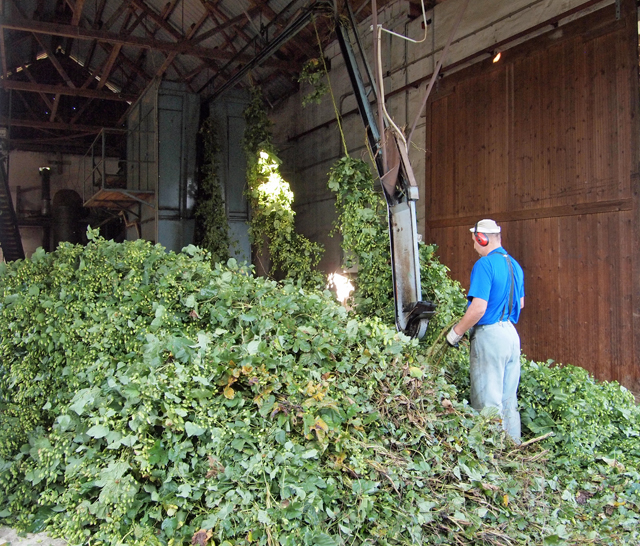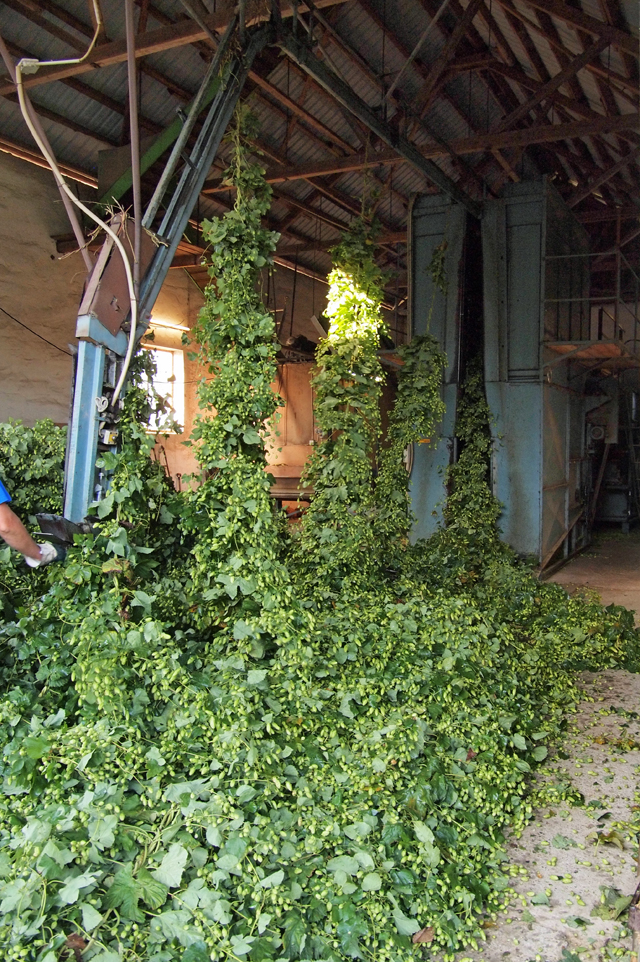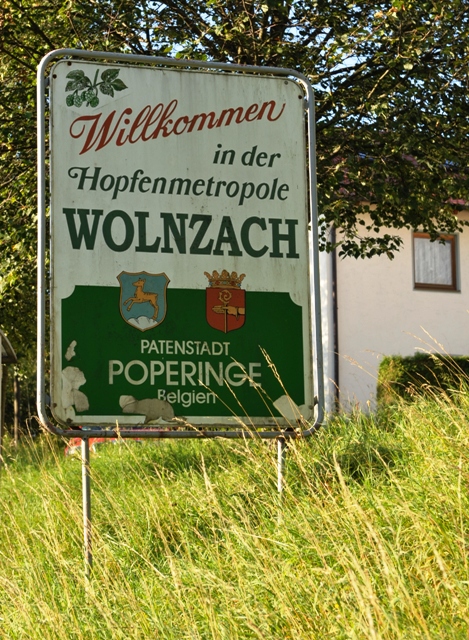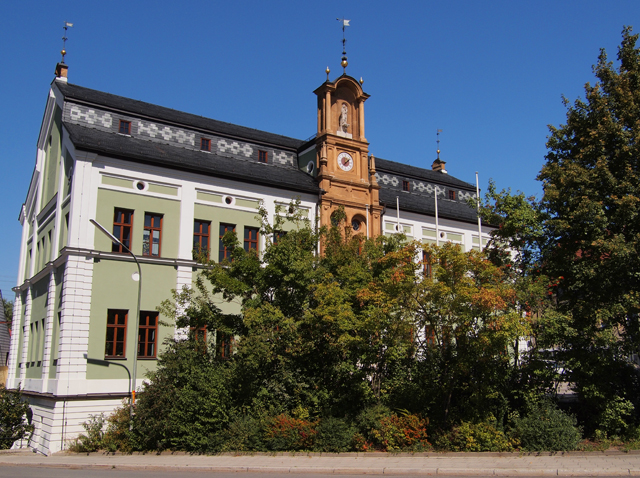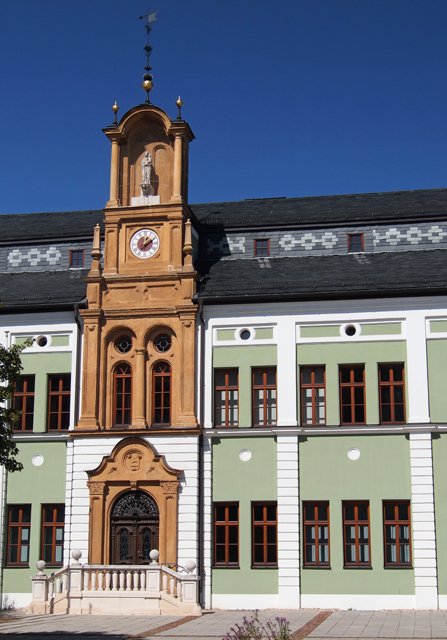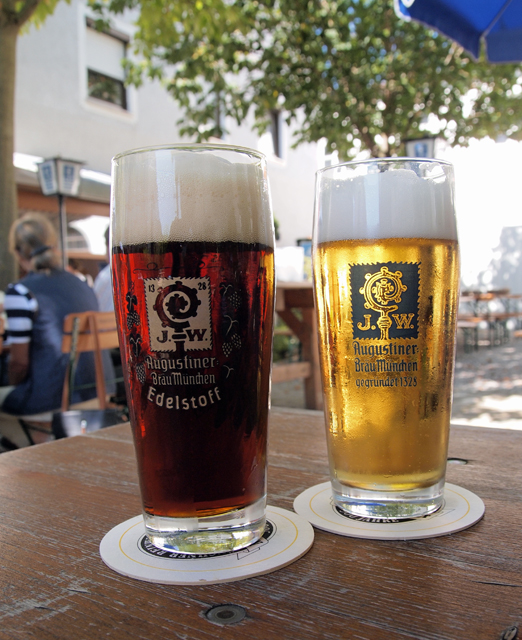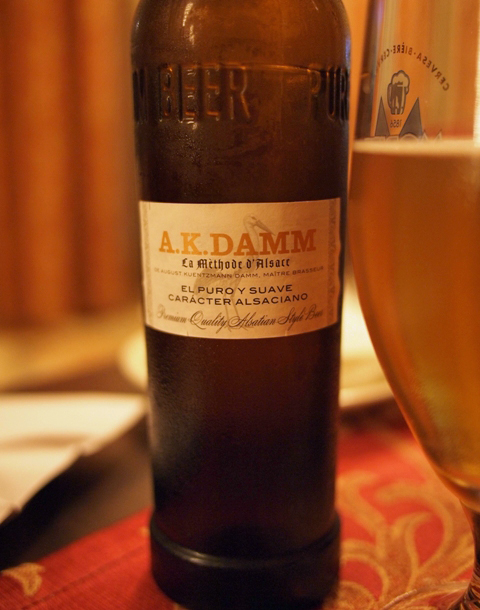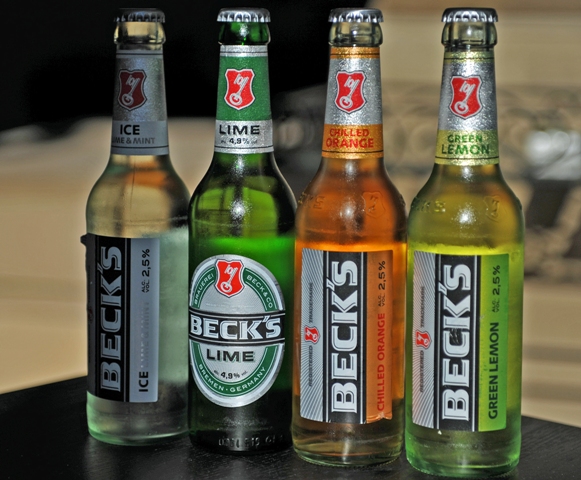Hopfenland - Lamplbräu microbrewery tour
 Wednesday, October 26, 2011 at 8:00
Wednesday, October 26, 2011 at 8:00 As described in an earlier blog post, Frau A and I spent a weekend in Bavaria's "Hopfenland", Hallertau, which produces 80% of Germany's hops and accounts for 25% of worldwide output. As part of the experience, we wanted to tour a brewery. One option was a microbrewery about 10 minutes from our hotel, in a town called Larsbach.
I telephoned Lamplbräu and the owner, Mr. Stanglmayr, picked up. He said that he would meet us basically any time, so we asked for Saturday 09.00 in the morning so we could fit more in that day. No problem!
(Above: sign outside Lamplbräu, "Bavarian Beer, unique in the world"; see the hops flowers in the crest?)
We arrived a few minutes early to a small, plain building that sits next to a hops farm (on the other side):
Note: a "Sudhaus" is the place in a brewery where the mashing process occurs and the wort is extracted.
Mr. Stanglmayr heard the car doors and came out right away. We explained about our "hops weekend" and he showed us, right inside the door, a basket of fresh hops he just received from his neighbors. That's fresh!
(We're guessing he extracts the resin/powder himself - no pre-packaged hops pellets for Lampl Bräurei.)
He started the tour right away. Satisfyingly, we spoke only German with him, without major issues!
First, on the ground floor, the copper brew kettles where the wort and hops are boiled.
After boiling, the mixture is piped up to the second level and through the cooling apparatus (photo, left side).
When cool, the liquid is moved into the tank (right side) and yeast is added to start the fermentation process:
After fermentation, the beer is transferred back to the ground floor for "racking" (lagering). In this process it sits in "conditioning tanks" to age -- 4 to 12 weeks depending on the type of beer being brewed (less for weissbier, an ale):
The beer is held in those stainless steel tanks until bottled or kegged:
Mr. Stanglmayr is a certified Meisterbrauer (master brewer). He rotates batches between weissbier, helles, and "bier nach Pilsner art" (beer in the pilsner style). Local hops are used for the helles and weissbier of course. Not sure about the pilsner though -- he might get Czech (Pilsen) hops for that, but we didn't ask specifically.
Interestingly, 100% of the output is consumed "locally" (+/- 20 miles?) - you can't even get this in Munich!
He has an old Mercedes truck for deliveries! Very cool:
His house is literally right next door to the brewery building - a perfect small-town artisian German lifestyle.
He took us into his back yard and showed us his charcoal grill, made by a neighbor from an old beer keg!
Who wouldn't want one of these?
At the end (about an hour) Mr. Stanglmayr offered us a six-pack of beer he had fresh: 3 weissbier, 3 pils:
Later, at the Hops Museum, we picked up his last batch of helles too. Back in Munich we chilled and tasted them.
It's neat to try beer made by a German master brewer that is simply NOT available outside this small town area!
The helles was very similar (which is a good thing) to the Munich offerings... same sweetness and subtle hops.
The pilsner was also very good -- quite hoppy, but so much fresher and more complex than the big brands.
The most outstanding offering was his weissbier. Incredibly crisp, a little less banana/clove than a typical weissbier, but with different spice notes that we really liked. It would have been a Tournament contender!
A hearty thanks to Mr. Stanglmayr for his time, friendly conversation, and great gift of Lamplbräu beer!
 Herr J ...
Herr J ...  Post a Comment
Post a Comment  Beer tagged
Beer tagged  Hallertau,
Hallertau,  Hopfenland,
Hopfenland,  Lamplbräu,
Lamplbräu,  beer,
beer,  helles,
helles,  pilsner,
pilsner,  weissbier ...
weissbier ...  Print Article
Print Article  Email Article
Email Article 



